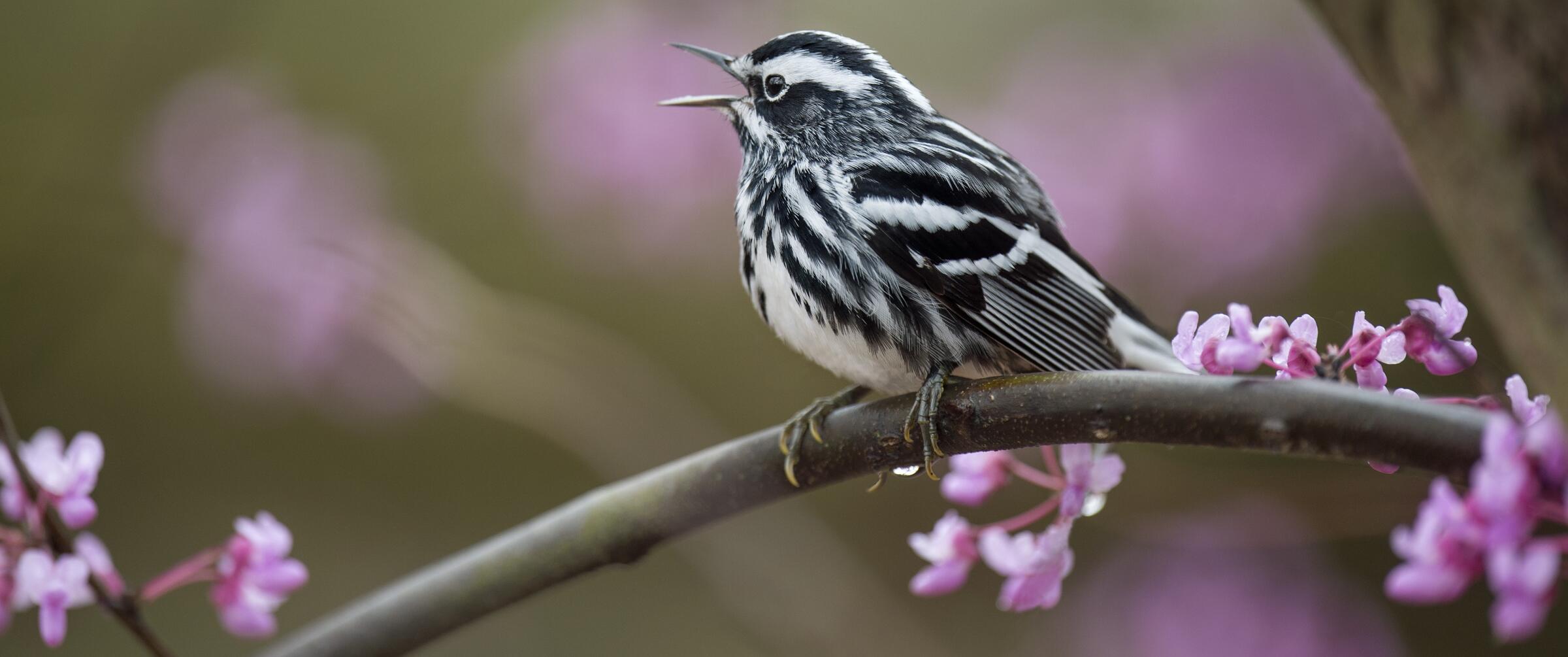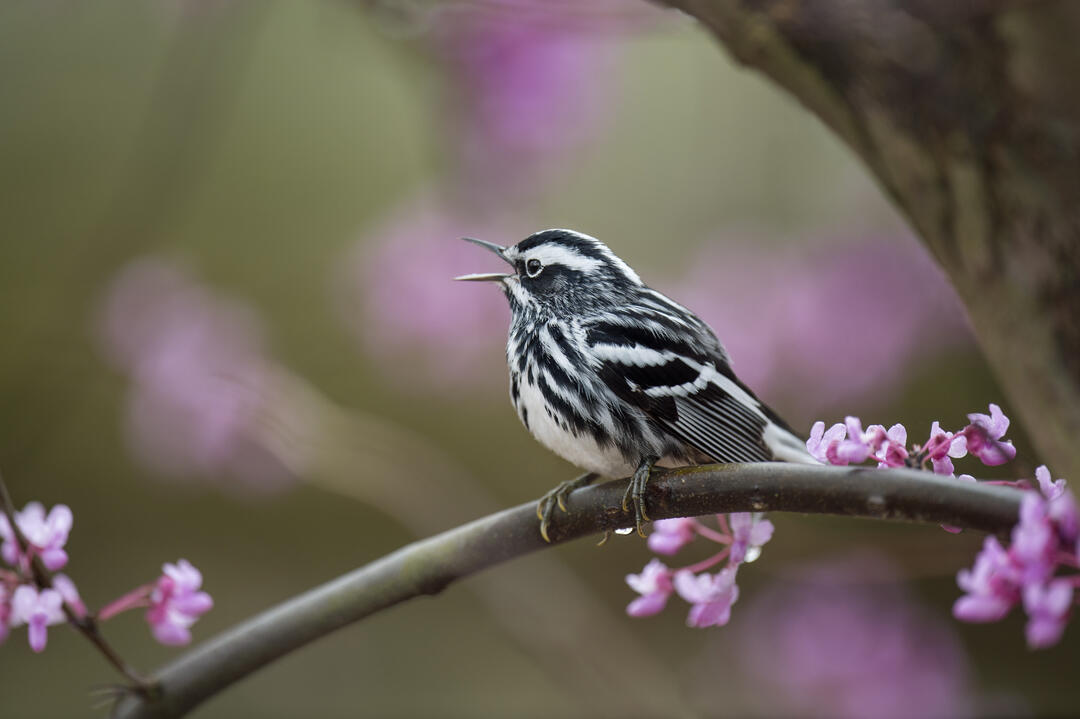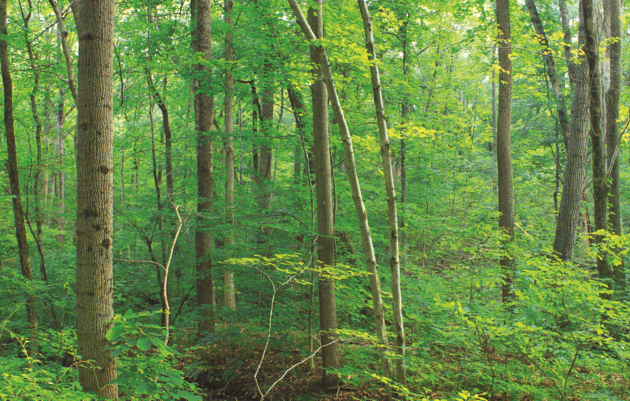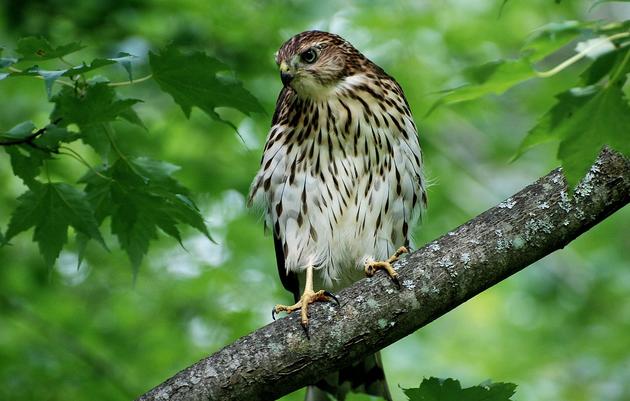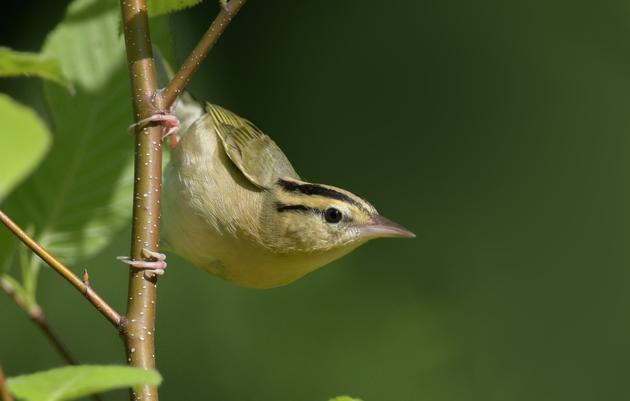As we enter spring and welcome the warm weather, we are seeing more birds come back from their wintering grounds. Many forest birds migrate long distances to their breeding locations in the spring. It is crucial that these birds have quality habitat so they can nest, feed, and raise their young to ensure the next generation of the species.
Most neotropical migrants leave the northeast in September and return in April and May. Each bird species has different habitat requirements, so it is key to have a healthy and diverse forest to fulfill all their needs. A healthy forest is composed of multiple age classes and species of trees, provides ecosystem services, and supports forest birds and other wildlife.
Eastern Phoebe
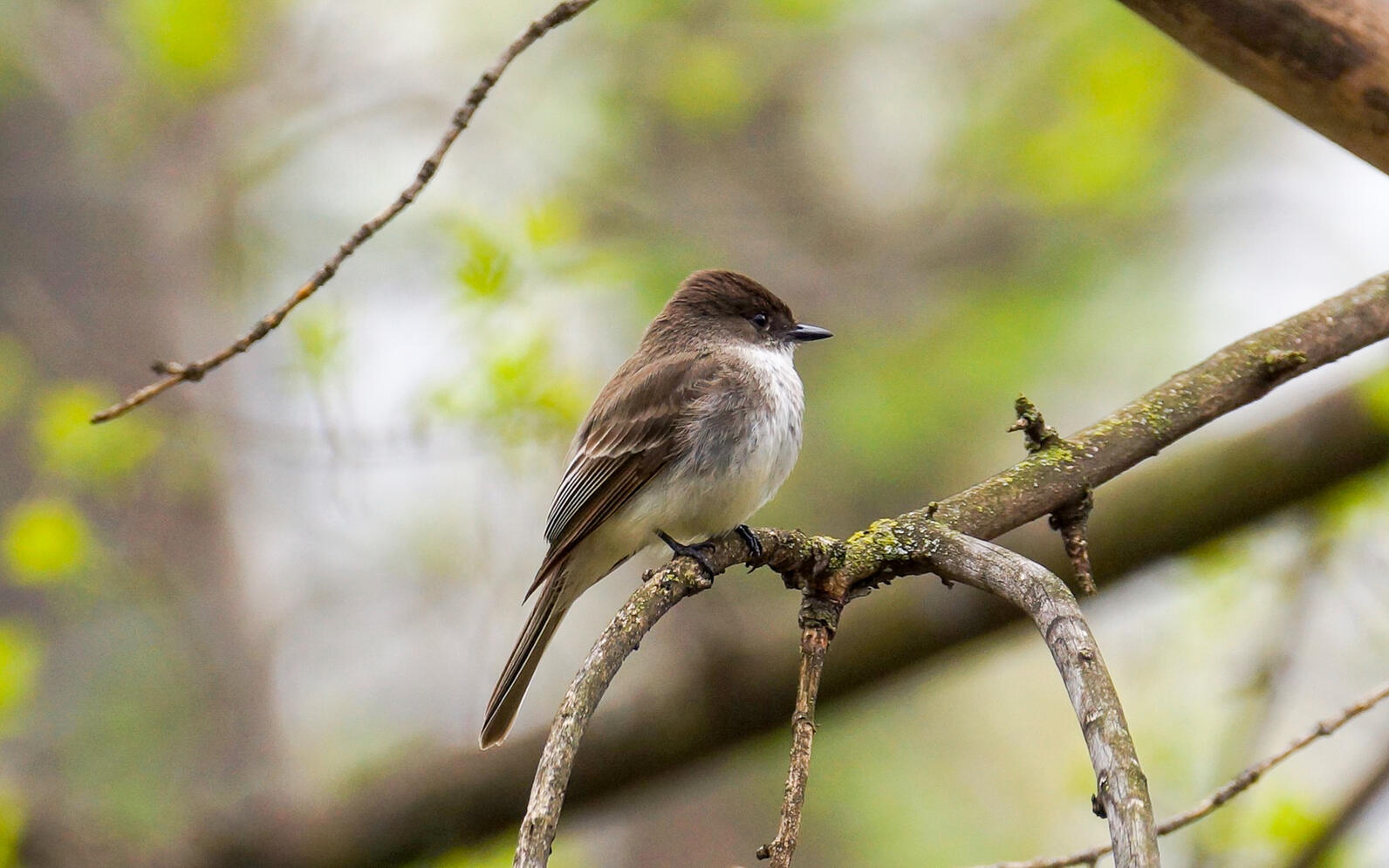
Among the earliest migrants, this flycatcher arrives back north at the beginning of spring. Eastern Phoebes are brownish grey on top with white on their bellies and can usually be found perched low in trees or on fences.
This bird favors mature, open woods during the breeding season. Eastern Phoebes are common along streamsides, wooded parks, and forests with semi-open canopies. In migration and winter, they are found in young forest patches in mature woods, brushy areas, and near water. Eastern Phoebes have short, thin bills used for catching insects. Insects make up a great majority of their summer diet, and berries are eaten often during the cooler months.
Habitat Tips
- Maintain or increase native tree and shrub diversity to support native insect populations that are the main food source for Eastern Phoebe during the breeding season. You can do this by controlling invasive plants and letting native species regenerate naturally, or you can plant native trees and shrubs.
- Improve habitat by creating canopy gaps (0.10-0.75 acres in size) in mature forest
Yellow-bellied Sapsucker
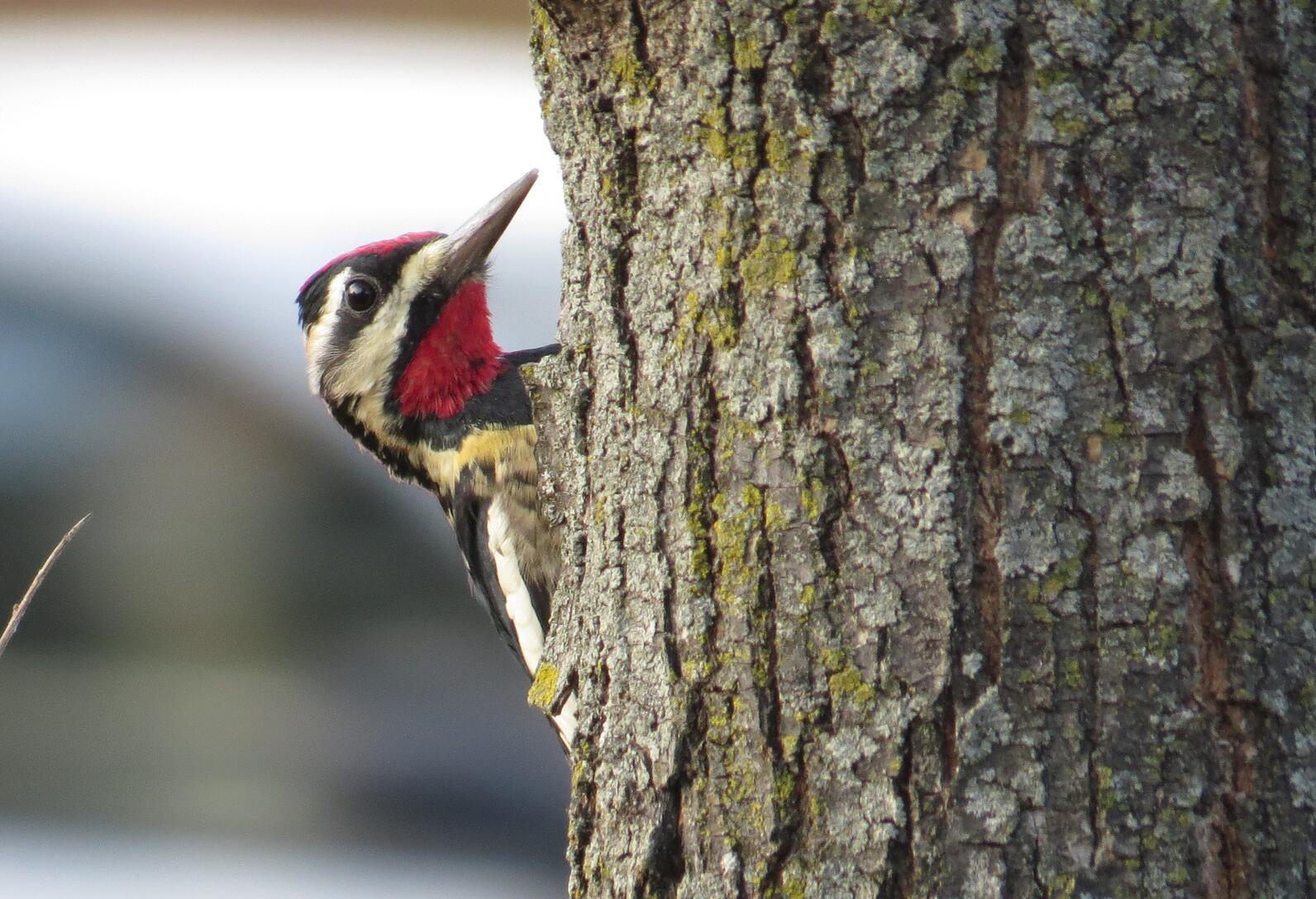
In the spring, you’ll know a Yellow-bellied Sapsucker is nearby when you hear their cat-like calls and staccato drumming. With essentially no overlap between summer and winter ranges, they are one of the most migratory of woodpecker species.
This bird is mainly black and white with a boldly patterned face. Both males and females have red foreheads, but only males have red throats. Yellow-bellied Sapsuckers perch upright in trees by using their tails to lean on. Their diet includes insects, tree sap, and fruit. They are found in mixed hardwood and conifer forests, and favor aspen, poplar, and birch groves for nesting. They excavate their tree cavity nest site in snags or dead limbs on living trees.
Habitat Tips
- Offer lots of cavity excavation nest site opportunities by maintaining or creating snags (standing dead trees) or leaving dead limbs on living trees (where you can do so safely!)
- Perpetuate aspen stands in your forest by cutting trees at the end of the lifespan (usually somewhere around 60-100 years but consult with a professional forester for guidance)
- Manage for tree species diversity to provide a mixed deciduous and coniferous forest
Eastern Towhee
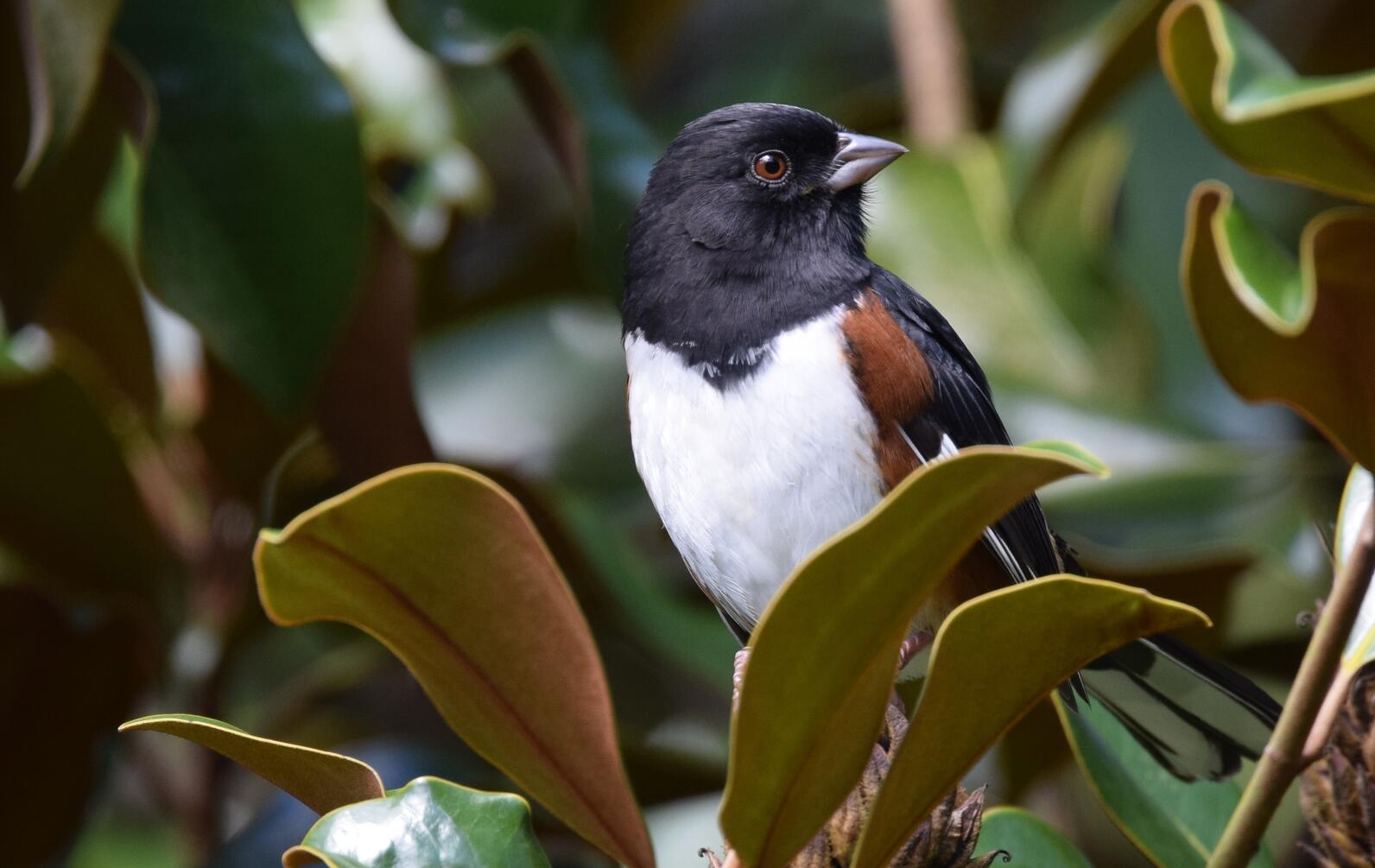
While Eastern Towhees tend to be permanent residents in warmer climates down south, most of the ones in the north are migratory. This bird has a white belly with reddish-brown sides. Males have black above and on the breast, where females have rich brown. Northern species have red eyes.
Eastern Towhees diets vary with season and region but eat mostly insects, seeds, and berries. They are birds of the undergrowth, and need dense thickets or young, regenerating forest for breeding habitat. You can often find them foraging for insects in leaf litter in deciduous and mixed forests. Many times, this bird is first noticed by the sounds of industrious scratching in the leaf-litter under dense thickets.
Habitat Tips
- Select regeneration harvests methods like a seed tree or clearcut (greater than 5 acres in size) to create ample young forest habitat and dense cover for foraging
- Avoid disturbing dense pockets of leaf litter by limiting trail development in the forest
- Leave the tops and limbs of harvested trees in the forest to create vertical structural diversity in the understory
Northern Waterthrush
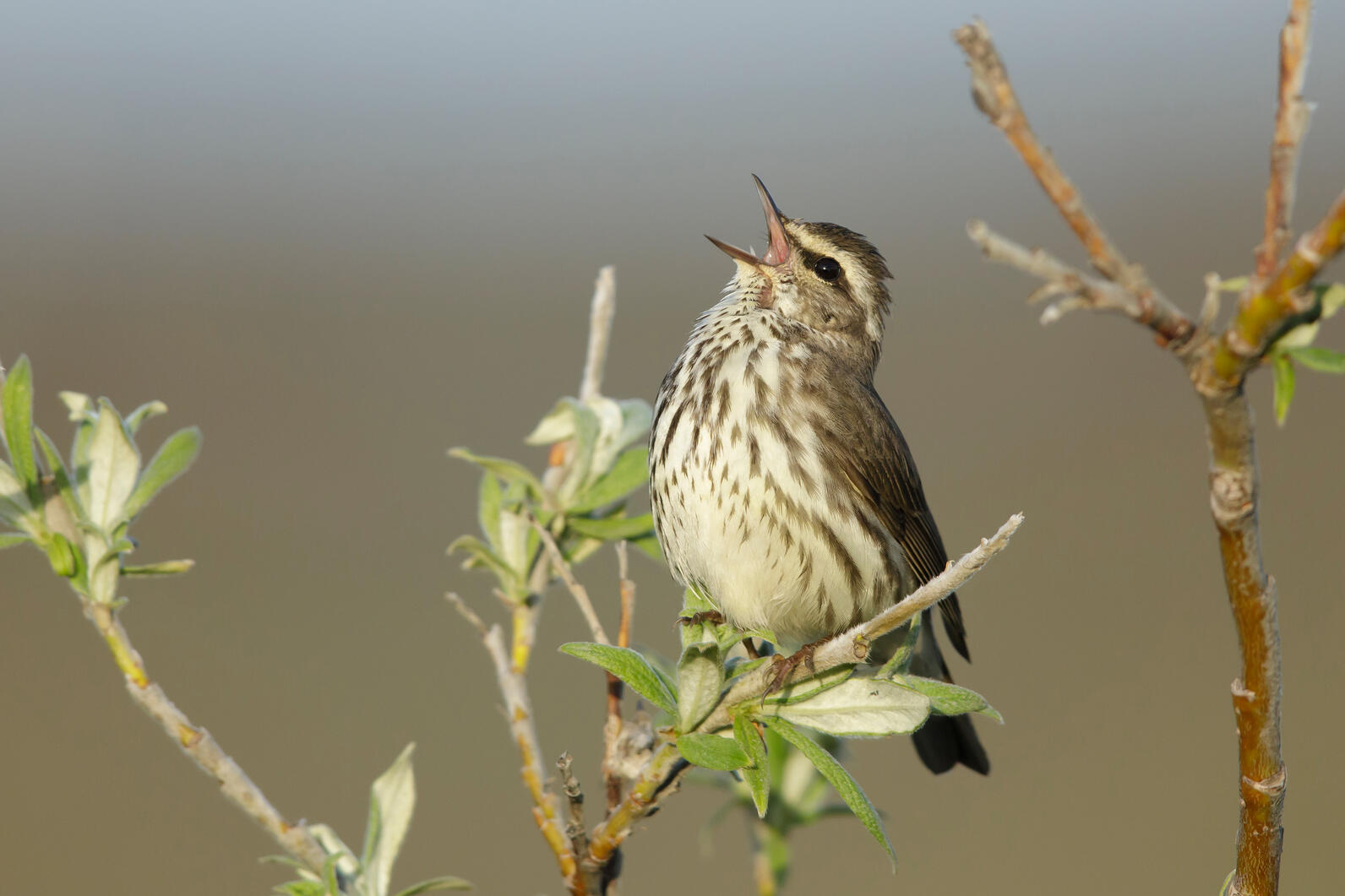
Most likely to be found along wetlands, streams, and lake shores, Northern Waterthrushes are often shy and hard to approach. This bird migrates mostly at night and does not migrate north as early in spring as the Louisiana Waterthrush.
This species nests in multiple age classes in mixed coniferous and deciduous forests with standing and running water. Once the young have left the nest or “fledged”, this species can be found foraging near the ground by streams, brooks or wetlands. The bulk of their diet consists of aquatic and terrestrial insects, and they will occasionally feed on small crustaceans and other invertebrates.
Habitat Tips
- Protect forested buffers along streams and control invasive plants
- Maintain pockets of dense understory leaf litter
- Do not disturb coarse woody debris from fallen trees or large rocks near streamsides
- Maintain wetlands or vernal pools conducive to foraging
- Maintain stream courses and remove any impeding blockages
Black-and-white Warbler
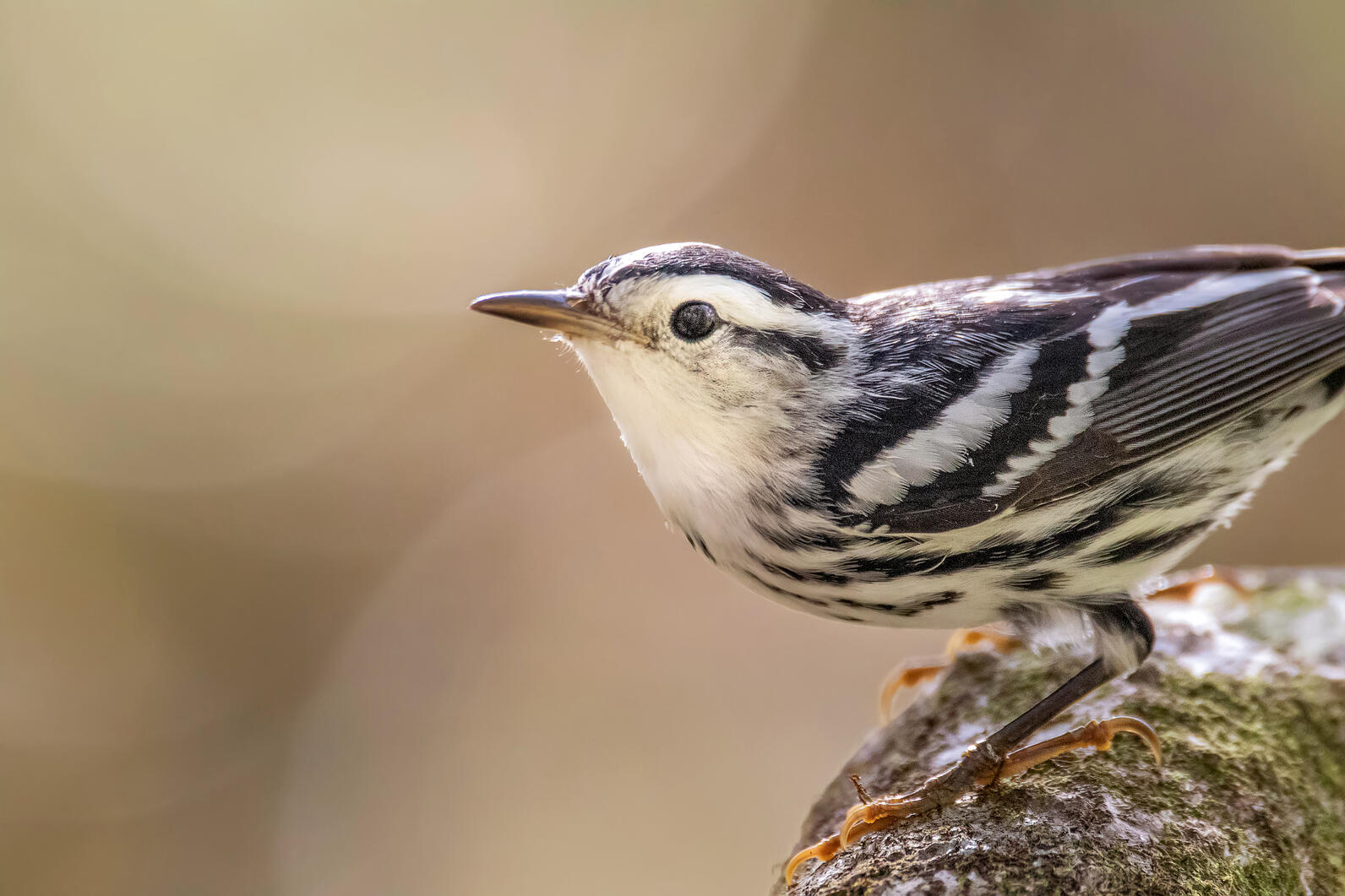
Thanks to its easy-to-identify boldly striped black and white pattern, and their easy to learn song reminiscent of a squeaky wheel, the Black-and-white Warbler is often a favorite among beginning birders. This bird is one of the earliest warblers to arrive during spring migration.
Once known as the ‘Black-and-white Creeper,’ these birds act more like nuthatches or creepers than warblers. They climb about on the trucks and major limbs of trees, foraging for hidden insects in the bark. Black-and-white Warblers can be found nesting no more than two feet above the ground at the base of a tree, rock, stump, or fallen log, or under a bush or shrub, in deciduous and mixed forests with multiple age classes (including healthy understory, midstory and overstory trees).
Habitat Tips
- Create canopy gaps (.75-2 acres in size) to enhance understory cover near the forest floor to protect nests
- Maintain dead trees or trees with cavities that provide an abundance of insects
- Leave downed woody material on the forest floor to increase cover for nesting

